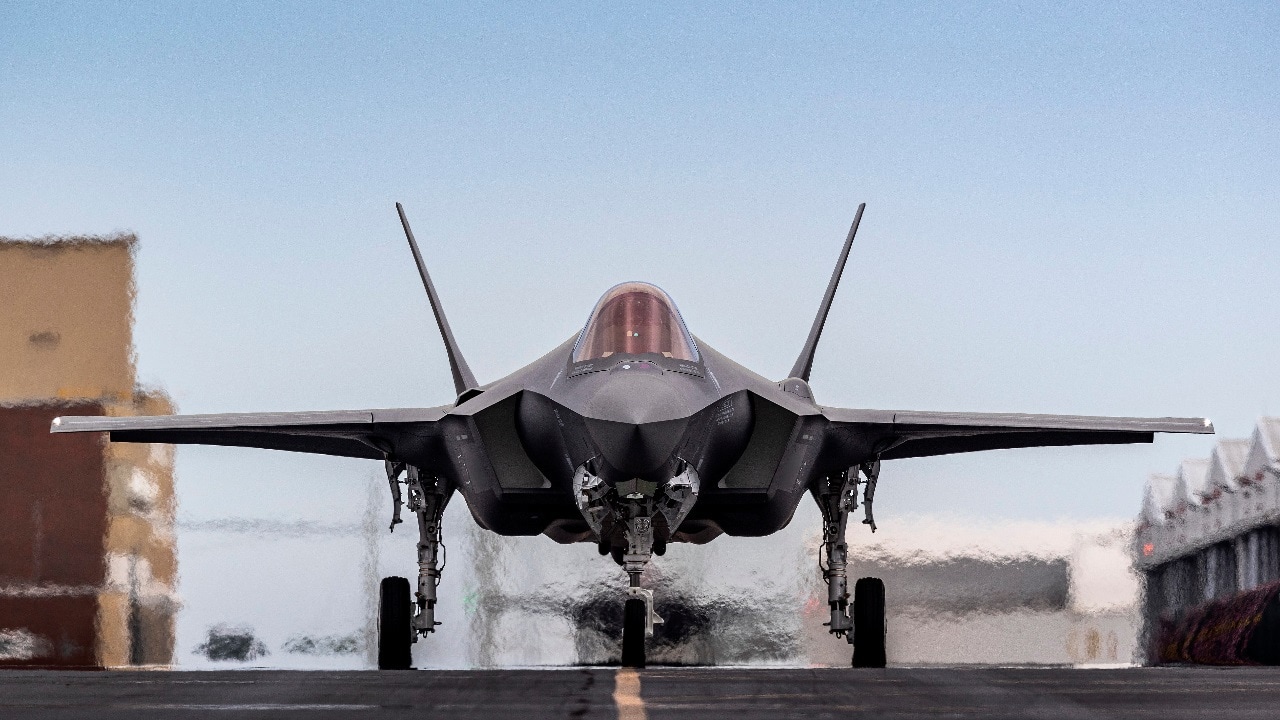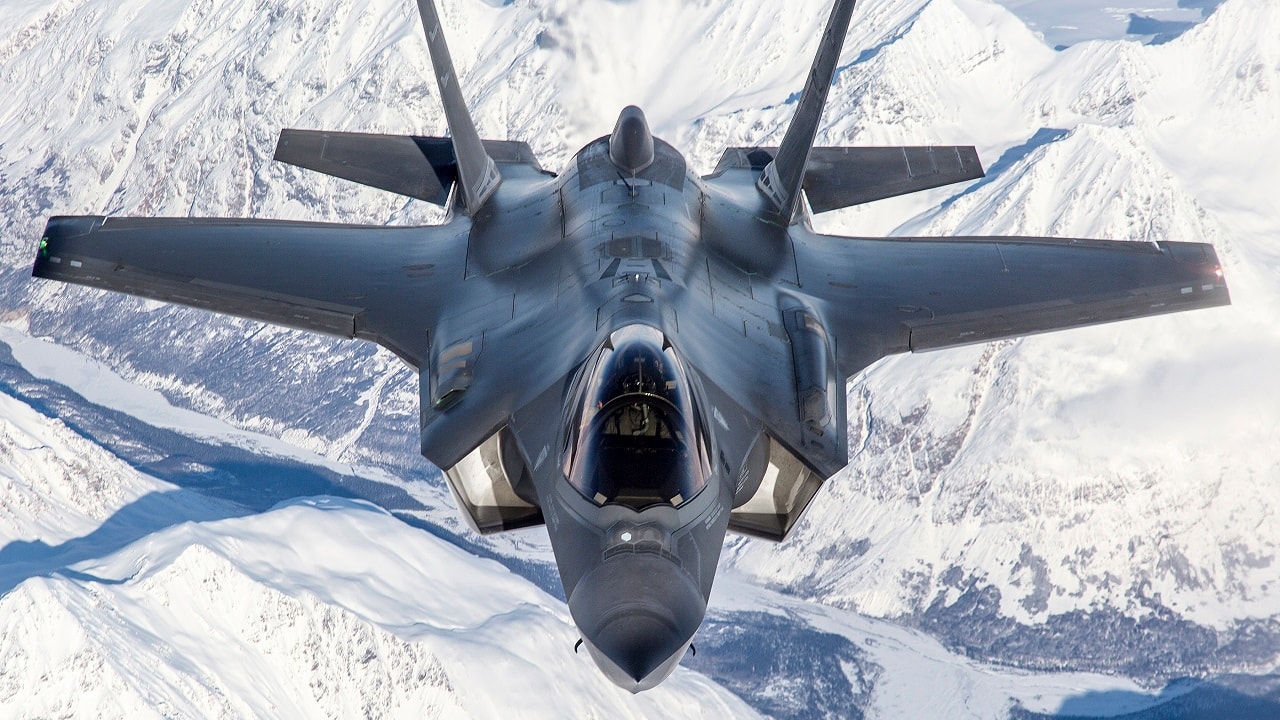Key Points – No F-35 for Canada?: Continuing to rely solely on Canada’s aging CF-18 Hornet fleet is not a viable option for the Royal Canadian Air Force, given the aircraft’s obsolescence and the force’s critically low overall mission capable rates (around 40%).
-As Prime Minister Mark Carney’s government reviews its F-35 purchase amid strained US relations, the focus shifts to acquiring new fighters.

F-35 Stealth Fighter. Image Credit: Creative Commons.
-Options include proceeding with the full F-35 order, opting for European jets like the Saab Gripen or Eurofighter Typhoon, or potentially a mixed fleet.
-A key factor in this decision will likely be offers for Canadian industrial participation and domestic production.
Forget the F-35: Should Canada Just Keep Its Aging CF-18 Hornet Fighter Jet?
Canada is looking forward to a new era in its defense strategy. Prime Minister Mark Carney will stay in office after winning the election full-time as the country’s leader.
Carney is in favor of exploring military options that reduce Canada’s dependence on the defense relationship with the United States.
This could mean cancelling a mega-deal for 88 F-35 stealth jets.
Canada could also enter into a consortium with the United Kingdom, Italy, and Japan to develop a sixth-generation fighter jet.
Maybe other European Fighters Could Fit the Bill
The Great White North could break the F-35 agreement and look to other fighters to fill the void, such as the JAS-39 Gripen or the Eurofighter Typhoon.
‘One other answer though, is simply betting on Canada.
Ottawa could stick to its existing CF-18 fighter and add updates that could make it competitive with those American and European jets.
This would save money and send a message to the world that Canada is back and is proud of its homegrown defense industry.
The CF-18 Is Struggling to Do Its Job
However, this gambit may not work. The CF-18 Hornet has seen better days, and the jet is not ready for prime time.
Many Canadian airplanes are unable to fly. A report this year claimed that only 40 percent of the entire air force fleet is mission-capable.
That means six out of ten airplanes could not answer the call should NATO require them in a contingency against Russia. Many of these on the fritz include the CF-18.
What to Do Now?
The Canadian Air Force is thus vulnerable. It will be challenging to keep the CF-18s and try to get them serviceable.
Then, updating them extensively to extend their life is a challenge. The air force could swallow a bitter pill and go with the F-35, or buy the Gripen or Typhoon, and admit that the Canadian military cannot stand on its own two feet without international assistance.
The CF-18 Has Some Redeeming Qualities
The CF-18 has been in service for 45 years, so it needs either a modernization program or retirement. When working right, the CF-18 can hold its own as a variant of the American F/A-18.
It is a multi-role fighter that can conduct air policing and border watch duties, plus ground attack and tactical air support. The top speed is not bad at MACH 1.8. Its sensors track targets well, and maneuverability is fine if not overpowering. There is a plan to extend the life of the CF-18 to last until 2032. That could answer some questions about its staying power.
Maybe Just Buy Another Fighter?
It may be easier to buy another fighter. This would make sense, but doing so is expensive. The F-35 deal is expected to cost upwards of $19 billion, and Canada has already committed to funding the first 16 stealth models.
The Gripen and Typhoons are not inexpensive either. The Eurofighter costs approximately $117 million per unit, while the Gripen is cheaper at $85 million each; however, this will add up to billions for a significant purchase.
Canada will also face interoperability issues when combining a force of new fighters with the CF-18. Pilots will need to be trained and crew members certified in maintaining either the JAS-39, Eurofighter, or F-35. The F-35 may have an edge. It is produced in Fort Worth, Texas, so spare parts and munitions support would come from a neighboring country, not Europe. Many NATO partners already fly it. Plus, the manufacturing and supply chains would be located in North America.
What if the New Fighter Could Be Partially Made in Canada?
One hypothetical deal would be for Canada to be granted manufacturing rights to produce parts for the Gripen, Typhoon, or Lightning II in the country. This could ultimately reduce the cost of the deal and create jobs in the homeland. Saab proposed this arrangement in 2023, following its loss in the competition to the F-35. This “homegrown” offer, if still on the table, could persuade Carney and his national security team to choose Saab. It is not clear whether the Canadians could make components of the F-35 or Eurofighter in indigenous factories too.
Canada must decide soon. The CF-18 is not completely combat-effective. The extension program will take some time to implement. The F-35 offer is partially consummated, and the Americans need to know whether they will take the full allotment of 88 Lightning IIs. The Eurofighter could use some positive guidance, too, so it can adjust its manufacturing line.
Canada cannot entirely depend on the CF-18. It must examine options that will make for a difficult choice. But Lockheed Martin is now on its back foot. It will need some hand-holding and adept salesmanship for the Canadians to honor the F-35 deal. All of this can be attributed to Trump’s belligerent rhetoric about Canada becoming the “51st state” and his trade war against the northern neighbor.
If Canada extends the life of the CF-18, it will still need a new fighter to bolster its numbers, which are currently inadequate. If it retires the airplane altogether, then the Air Force must choose which direction it wants to go with a new manufacturer. Until then, the country must figure out a way to keep the CF-18 combat-capable. Forty percent of all airplanes in the fleet are out of action.
That is unacceptable, and it may mean that Canada opts for a new fighter altogether – perhaps one that can be partially assembled in the country.
About the Author: Dr. Brent M. Eastwood
Brent M. Eastwood, PhD is the author of Don’t Turn Your Back On the World: a Conservative Foreign Policy and Humans, Machines, and Data: Future Trends in Warfare plus two other books. Brent was the founder and CEO of a tech firm that predicted world events using artificial intelligence. He served as a legislative fellow for U.S. Senator Tim Scott and advised the senator on defense and foreign policy issues. He has taught at American University, George Washington University, and George Mason University. Brent is a former U.S. Army Infantry officer. He can be followed on X @BMEastwood.

